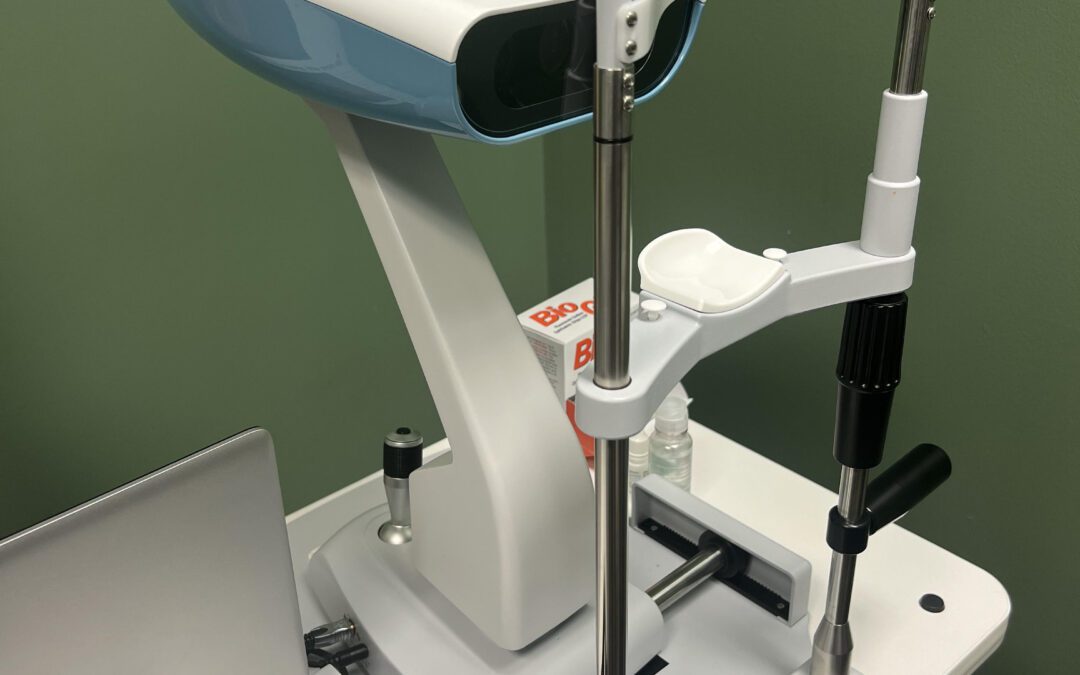Scleral contact lenses have become a breakthrough solution for patients with various corneal irregularities (i.e., keratoconus, pellucid marginal degeneration, LASIK or RK complications) and severe dry eye syndrome. Unlike traditional contact lenses, scleral lenses vault over the cornea and rest on the white part of the eye, known as the sclera. This unique positioning not only provides exceptional comfort but also offers improved vision. However, the key to maximizing these benefits lies in precise fitting — a process now revolutionized by the advent of the scleral surface profiler. Scott Eye Care is now equipped with the Eaglet Eye Surface Profiler (ESP).
The Challenge of Fitting Scleral Lenses
Traditionally, fitting scleral lenses was a game of trial and error. Eye care professionals relied on their expertise and intuition, using a set of generic fitting sets to estimate the best fit for each patient. This approach, while effective, was time-consuming and often required multiple adjustments to achieve optimal comfort and vision.
Enter the Scleral Surface Profiler
The scleral surface profiler has changed the game. This advanced technology provides a detailed map of the sclera’s surface, offering eye care practitioners a precise understanding of its shape and contours. This level of detail was previously unattainable and has opened new doors in custom lens design.
How It Works
The scleral surface profiler uses sophisticated imaging technology to scan the eye’s surface, capturing thousands of data points across the sclera. This information is then used to create a highly accurate model of the eye’s surface, highlighting variations in curvature and elevation that are critical for fitting scleral lenses.
Benefits of Using a Scleral Surface Profiler
- Customized Fit: Every eye is unique. The scleral surface profiler allows for lenses that are tailor-made to the individual contours of each patient’s eye, ensuring an ideal fit.
- Improved Comfort and Vision: A well-fitted scleral lens provides superior comfort and can significantly improve visual acuity, especially in patients with irregular corneas.
- Efficiency in Fitting Process: By eliminating much of the guesswork, the scleral surface profiler streamlines the fitting process, reducing the need for multiple appointments and adjustments (although these still may be necessary).
- Reduced Complications: A precise fit minimizes the risk of complications.
Case Studies and Success Stories
The impact of the scleral surface profiler is best illustrated through real-life scenarios. Numerous case studies have demonstrated its effectiveness in challenging cases, such as patients with keratoconus, post-corneal grafts, or severe dry eye syndrome. We have successfully fit many patients with scleral contacts using this technology.
Looking Ahead
The integration of scleral surface profilers in eye care practices is a testament to the ongoing advancements in ocular technology. As this tool becomes more widespread, we can expect even greater strides in custom lens fitting, offering patients unparalleled comfort and vision quality.
Conclusion
The scleral surface profiler represents a significant leap forward in the field of optometry. By enabling custom-fit scleral lenses with unprecedented precision, it not only enhances patient outcomes but also streamlines the fitting process for practitioners.

